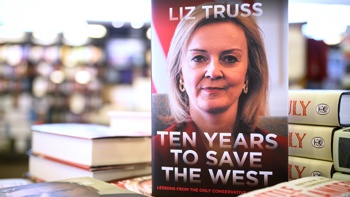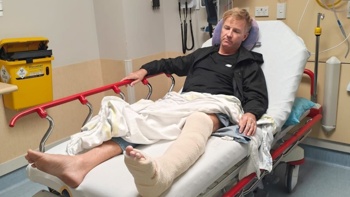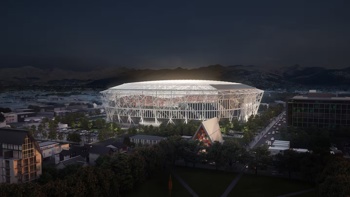No surrender. No retreat. President Vladimir Putin's "Plan B" is to concentrate his forces on one brutal and overwhelming push. Can Ukraine endure it?
Putin's "Plan A" has been abandoned. He believed his tanks and troops could roll virtually unopposed across Ukraine and into the capital Kyiv. It resulted in a humiliating defeat.
Now Russia has a "Plan B". It's what "Plan A" should have been in the first place. And that has dire implications for Ukraine's weary defenders.
But doubts persist that the Kremlin has the capacity – and the will – to pull it off. International analysts believe President Putin is still demanding a quick victory.
May 9 is the anniversary of Nazi Germany's surrender in World War II.
Russia played a dominant role in that defeat.
And the traditional military parade through Moscow every year to celebrate that date would be the ideal time for Putin to declare victory over his "new Nazis".
But, after almost two months of the war, his troops are yet to capture a single major Ukrainian city.
They've lost a major warship. They've lost hundreds of tanks. Thousands of troops are dead.
So, he needs a quick success.
And the leading candidate is the besieged city of Mariupol on the Sea of Azov.
But the city of 500,000 has defied all expectations. Its defenders are clinging on despite intense Russian bombardment. Now Ukraine's President Volodymyr Zelensky is appealing for urgent assistance to help them maintain their defiant stand.
Newton's third law
Every action has an equal and opposite reaction. It's a harsh and unnecessary lesson to relearn. But Russia's army appears to be reverting to first principles.
Concentrate forces into one intimidating spearhead. Give it an achievable objective. Give it the support and supplies it needs to reach that goal.
The battered Battalion Tactical Groups (BTGs) that retreated from Kyiv are now resting, repairing and replacing losses behind the front lines in Belarus and Russia itself.
New forces are concentrating to the east of Ukraine, aimed at the region of Donbas.
"Plan A" had been divided between several different generals, each under Putin's remote control.
Now, for the first time, Russia's war plans are being co-ordinated by one supreme commander – Colonel General Alexander Dvornikov.
"The Russians will have a single command staff to co-ordinate and attempt to achieve a single focused and ostensibly realistic operational objective, instead of three separate competing ones in the north, south and east," says Ledwidge.
But the heat is on.
"The Russians want quick battles of annihilation," says Frank Ledwidge, University of Portsmouth Senior Lecturer in Military Strategy and Law.
"What they will get is a war of attrition."
Choosing the terrain
The defenders of Mariupol are surrendering. Isolated pockets of marines and militia are running out of ammunition and food.
They've been fighting since the first day of the war.
"We were bombed from airplanes, we were shot from artillery, tanks," a post by Ukraine's 36th Naval Infantry Brigade reads. "We kept the defense … by doing the impossible. But any resources have the potential to run out."
It may be a sign of what is to come for other Donbas cities.
Russia appears to be preparing to seize the fields surrounding them.
Neighbouring Poland's Prime Minister Mateusz Morawiecki warned: "The most decisive battle is about to begin, and at the same time the largest tank battle in this part of the world since World War II."
Putin's new focus is close to the Russian border. It's a region Russian troops have been fighting in covertly since 2014. It also has the support of local separatists determined to place their homes under Moscow's control.
The broad, flat terrain also offers Russia an advantage when it comes to its favourite fighting methods. Tanks can surge forward, protectively surrounded by troops, following a rolling curtain of massed artillery fire.
"The battle for Donbas will remind you of the Second World War, with its large operations and manoeuvres, the involvement of thousands of tanks, armoured vehicles, planes and artillery," Ukrainian Foreign Minister Dmytro Kuleba told a meeting of Nato ministers.
Russia's make-or-break move
The Donbas is used to war.
It's where Ukraine's best and most experienced units are dug-in.
But their fight will be against a more focused Russia.
"The battles to come will resemble more the manoeuvre battles of the Second World War than those fought around the cities of Kyiv, Mariupol and Sumy in the six weeks the war has raged so far," warns Ledwidge.
"Nonetheless, the Russians are unlikely to prevail."
Commercial satellite photos show Russia once again massing troops, armoured vehicles and equipment on the border with Donbas, Ukraine. Convoys of Russian vehicles are moving towards the city of Izyum in central-eastern Ukraine.
"These forces are pitched against Ukrainian defenders deployed in several salients or 'bulges' – areas surrounded on three sides by Russian-backed separatists," says Ledwidge. "Throughout military history, these have offered the possibility of trapping enemy forces in pockets".
US military analysts say the Ukrainian defenders of the towns of Izyum and Sloviansk are likely to be the first targets of Russia's new encirclement tactics. This will allow them to do the same to the city of Dnipro – a central hub on the Dneiper River.
Once such salients are surrounded, they can either be starved into submission or annihilated by air and artillery power.
"Ukrainian commanders fully and completely understand from bitter experience the risks of being surrounded," Ledwidge says. "Even better, they know what is coming. NATO air and space reconnaissance and surveillance as well as Ukraine's own intelligence capabilities will ensure that there will be no surprise attacks."
Through a glass, darkly
"The next battle will begin within the next two weeks," says Ledwidge. "Attempting to predict its precise course is ultimately futile. Not even the opposing generals know that."
But there are indications. Russia's troubles are systemic. It faces chronic issues of corruption, training, morale and leadership.
"These problems are not going away, and will not be solved by a change in command or operational focus," says Ledwidge.
Ukraine's forces may be tired. But they are fighting with determination.
"People are motivated to defend their territory when it's their home turf, more than people are motivated to attack it," says Council on Foreign Relations (CFR) analyst Gideon Rose. "You can see that the soldiers and the mercenaries on the Russian side are not particularly motivated, whereas the Ukrainians defending their homes are."
They know the city streets. They know the country paths.
But the successful ambush tactics used against Russian armour in the first stage of the war are unlikely to continue – if Russian forces get their act together.
And that's why Ukraine is pleading for heavy weapons – such as tanks and artillery – from the West.
The fight will likely be protracted. It will be conducted at long ranges over the open fields.
It could come down to who can continue hammering the other the longest.
Finally, President Putin remains a wildcard.
"Putin is likely to keep fighting until he works his way through the five stages of grief," Rose told NPR.
"Denial, anger, bargaining, depression, acceptance. What ultimately has to happen is Putin has to accept defeat and choose to walk away, choose to retrench. And that is something that is a psychological process, not just a strategic process."
- by Jamie Seidel, news.com.au
Take your Radio, Podcasts and Music with you









